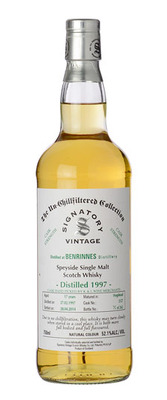|
|
Release Notes
Benrinnes distillery is one of the unsung heroes of the Diageo portfolio. It's not released as a single malt in the United States and it gets very little fanfare amongst enthusiasts, but it's one of the prettiest, and more consistently-delicious whiskies we taste between bottlers. We don't taste many barrels of Benrinnes that we don't like. On this year's trip we finally made it to the actual distillery, dropping by unannounced to see if we might take a peek inside. The staff couldn't have been nicer or more accommodating (something that always seems to make the whisky taste just a bit better). As we toured the site, we learned that the fermentation at Benrinnes lasts about sixty-five hours in Oregon pine washbacks, which contributes to the fruitiness of the eventual distilled spirit. When you see something with your own eyes, hear the reasoning and the science behind the process, and then taste that result 16 years later on down the line, it can be quite a rewarding experience. The 1997 hogshead we found at Signatory is brimming with soft vanilla and a round fruity palate that makes me think of Glenmorangie, but even more expressive. The finish is impressive, meandering between brandied cherries and sweet ice tea. At cask strength, the whisky is absolutely perfect -- no water needed. I think our selection of 1997 Highland whiskies is going to be very popular with our value-focused customers. The Benrinnes might be the best of the bunch.
David Driscoll, K&L
One of 262 bottles filled from Hogshead #2127 on April 28th, 2014. Distilled on February 27th, 1997.
Yours Truly
The Bottler: Signatory Vintage
| Established: 1988 |
| Silent since: False |
| Address: Edradour Distillery, Pitlochry, Perthshire & Kinross, PH16 5JP, Scotland |
Signatory owns the smallest distillery from Scotland, Edradour since 22 july 2002
In April 1992, as the company began to grow, they moved to much larger premises. Here, they were granted a licence to bottle their own products on site. They set-up a small line bottling system, primarily geared towards the bottling of single casks. Although the actual bottling of whisky is semi-automated, the emphasis is very much a hands-on operation, with hand labeling and packing of products. To add to the exclusivity of their bottlings, they often declare the cask number, date of distillation,and date of bottling on our labels. In addition,each bottle is individually hand numbered.
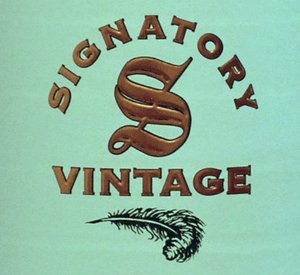
It is their aim, as an independent bottler to offer a range of whiskies, some of which are not bottled by the proprietor of a particular distillery, and some at different ages/strengths to those offered as distillery bottlings. The majority of their bottlings are the product of single casks, with the malt whisky enthusiast being given the opportunity to sample the subtle differences which occur with each different cask.
The name of Signatory derived from the fact that their initial intention was to find someone famous to sign the labels for bottles produced from one single cask. The first cask we purchased was a cask of 1968 Glenlivet, which was sold long before we could find a famous person.
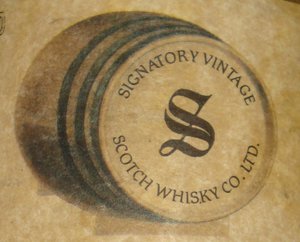
Until April 1992, when they moved to their current premises in Newhaven (Edinburgh), they operated from a bonded warehouse in Leith. Leith was once a well known port for importing wine from France. As this industry declined, many of the whisky companies began to occupy the old warehouses for cask storage purposes. In recent years, this has also declined, with the larger companies moving to the west of Edinburgh, where transport links are better.
The company was founded in 1988. It is a family owned and managed company, being one of only three true independent bottlers. They always like to draw a distinction between the independent companies who bottle their own products, and the independent companies whose products are bottled under contract. The other fully independent bottlers are: Gordon & MacPhail and Wm. Cadenhead.
from Whisky-Distilleries.info
The Distillery: Benrinnes
| Established: 1835 |
| Silent since: False |
| Address: Charlestown of Aberlour, Banffshire AB38 9NN, United Kingdom |
In the New Millenium
The Benrinnes distillery (sometimes spelled as "Ben Rinnes") was constructed near the site of an earlier distillery which was built near Whitehouse Farm, Banffshire in 1826. It was perhaps not the most fortunate choice of locations: the first Benrinnes distillery was destroyed by a flood in 1829.
In 2005 only thirteen other distilleries still used this cooling system; Balmenach, Cragganmore, Dalwhinnie, Edradour, Glen Elgin, Glenkinchie, Mortlach, Oban, Old Pulteney, Royal Lochnagar, Speyburn, Springbank (on their wash still only) and Talisker. The subsequent "boom" in the whisky industry (due to increased demand from Asia and Russia in particular) may have had its effects since then.
But now I"m getting ahead of myself - the late 1990"s were significant too... In 1998 UD (United Distillers, part of Guiness Group) and IDV (International Distillers & Vintners, part of Grand Metropolitan Group) merged into UDV (United Distillers & Vintners). I"m not entirely sure how the large corporations are legally linked exactly, but UDV is synonymous with Diageo. When I write this update of the profile (summer 2008), Diageo is by far Scotland"s largest whisky producers with almost thirty active malt whisky distilleries - which is about a third of the total number of active distilleries in Scotland. But there are far more "brands" than distilleries...
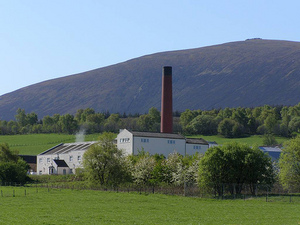
In 1970 Benrinnes switched from mechanical stoking to internal heating. In 1974 the production regime was changed again when the distillery switched to a system of "partial triple distillation" . So-called "feints and low wines" produced in the second distillation (in the first spirit still) are distilled again in the second spirit still.
And that"s not the only unique feature of the distillery; Benrinnes is one of the few distilleries in Scotland that still uses so-called "worm tubs" to cool the vapours and condensed spirit from the running stills. This feauture was once common, but not anymore.
Ordinary people might have given up, but not the Scots... Another distillery was constructed nearby in / around 1835. The ownership of this new distillery changed several times before John Dewar & Sons acquired Benrinnes in 1922. In 1925 the John Dewar & Sons company merged with DCL (Distillery Company Limited, now part of UDV / Diageo).
Benrinnes was completely rebuilt in 1955/1956 and the traditional floor maltings were replaced by a so-called "Saladin Box" in 1964. This is a giant flat box that mechanically turns the germinating barley inside and allows air to pass through it. The Saladin Box (named after its inventor Charles Saladin) was removed again in 1984 when Benrinnes stopped producing its own malted barley. The production capacity of Benrinnes was expanded significantly in 1966 by increasing the number of stills from three to six.
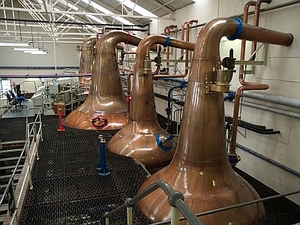
Take "Stronachie" for example - a mysterious malt whisky that appeared on the market in 2003. Although there used to be an actual "Stronachie" distillery around a century ago, this new bottle turned out to be a "bastard malt" that has very little to do with that historical distillery. Although the Stronachie is presented as a composition "inspired" by the profile of an old bottle of Stronachie from 1904 found somewhere, organoleptic tests and rumours indicate that these new bottles of Stronachie contain nothing else than Benrinnes 12yo single malt whisky. It"s a decent enough malt (and quite friendly priced at that), but I personally prefer "the real thing" at 15yo by F&F. So, don"t believe all the hyped up copywriting by Dewar Rattray you can read on the label...
The semi-official "Flora & Fauna" bottling of Benrinnes shown at the top of the page was first released in 1991. If I"m not mistaken, the only other semi-official release of Benrinnes was a 21yo UDRM (United Distillers Rare Malts) bottling distilled in 1974. Fortunately, independent bottlers have made dozens of different expressions available to malt whisky lovers worldwide. Especially Gordon & MacPhail has been active in this respecy with circa a dozen different bottlings. Together with Cadenhead"s, Signatory Vintage and a handful of other bottlers they had released a total of circa 50 different independent bottlings of Benrinnes by the year 2008 - if the data on the MM Monitor is correct.
2009 - For more than a decade Benrinnes was one of the "stepchildren" of Diageo, but they did receive a little more attention in 2009, when an expression was released in the insanely priced "Manager"s Choice" range. This series seems to be mostly aimed at collectors who were willing to look at this as an investment opportunity. The managers of a number of Diageo"s distilleries got together on February 17 to select "the very best casks" from each distillery. I haven"t tried them myself, but from people that have, I understand that Diageo"s very best wasn"t very good...
Trivia:
- In 1896 Benrinnes distillery was seriously damaged by a large fire. The owners used this as an opportunity to refurbish the entire distillery and add a novelty: electricity.
- The "look" of the Benrinnes distillery is fairly modern. That"s not because it was built recently (the first distillery buildings at the site were built in 1835), but the entire distillery was reconstructed in the late 1950"s. The number of stills was extended to six at that time - arranged in three pairs to enable some form of triple distillation.
from Malt Maniacs
The Owner: Diageo
| Established: 1997 |
| Silent since: False |
| Address: 8 Henrietta Place, London, W1G ONB, UK |
| → website |
Diageo also distributes Unicum, its lighter-bodied variant Zwack and Jose Cuervo tequila products in North America. However, Cuervo operates as a separate company in Mexico and is not owned by Diageo. Similarly Grand Marnier is distributed by Diageo in many markets, including exclusively in Canada, and a deal was reached in 2009 to significantly expand this partnership in Europe.
Furthermore, Diageo owns the Gleneagles Hotel.
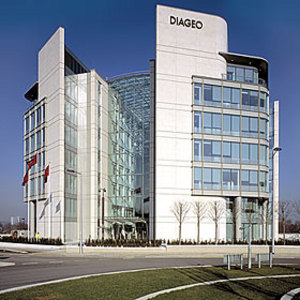
Diageo was formed in 1997 from the merger of Guinness plc and Grand Metropolitan plc. The creation was driven by the two executives Anthony Greener and Philip Yea at Guinness plus George Bull and John McGrath of Grand Metropolitan. The product portfolios of Guinness and Grand Met were largely complementary with little overlap.
Diageo is the world"s biggest whisky producer with 28 malt distilleries and two grain distilleries.The company operates the Scotch whisky distilleries of Auchroisk, Benrinnes, Blair Athol (situated at Pitlochry), Caol Ila, Cardhu, Knockando, Glen Elgin, Clynelish, Cragganmore, Dalwhinnie, Glenkinchie, Glen Ord, Lagavulin, Oban, Royal Lochnagar, Strathmill, Talisker, Teaninich, Mannochmore, Mortlach and Glenlossie, which are sold not only under their own name but used to make the various blended scotch whiskies sold by the company, and owns the stock of many closed distilleries such as Port Ellen, Rosebank, Brora, Convalmore, Glen Albyn, North Brechin, Banff, and Linlithgow. The company have opened a new malt distillery adjacent to their maltings at Roseisle (1st new make spirit produced Spring 2009). This will be one of the largest malt distilleries in Scotland. The new building contains 14 traditional copper pot stills. An expansion programme is also underway at its Cameron Bridge Grain Distillery in Fife that will make it the largest grain distillery in Scotland. Diageo also owns the Port Dundas Grain Distillery in Glasgow, and jointly operates the North British Grain Distillery in Gorgie, Edinburgh, with The Edrington Group.
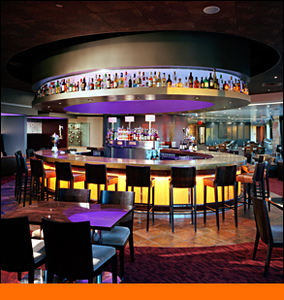
Diageo plc (LSE: DGE, NYSE: DEO) is the largest multinational beer, wine and spirits company in the world. The company is listed on the London Stock Exchange and has American Depositary Receipts listed on the New York Stock Exchange. The word Diageo was formed from the Latin dia (day) and the Greek geo (World), symbolising the use of the company"s brands every day, everywhere. Its head office is located in the City of Westminster in London. It is a constituent of the FTSE 100 Index.
Trivia:
- In December 2003, Diageo provoked controversy over its decision to change its Cardhu brand Scotch whisky from a single malt to a vatted malt (also known as a pure malt) whilst retaining the original name and bottle style. Diageo took this action because it did not have sufficient reserves to meet demand in the Spanish market, where Cardhu had been successful. After a meeting of producers, Diageo agreed to make changes.
- In 2006, the Cardhu brand quietly changed back to being a single malt.
- In July 2009, Diageo announced that, after nearly 200 years of association with the town of Kilmarnock, they would be closing the Johnnie Walker blending and bottling plant as part of restructuring to the business. This would make 700 workers unemployed and caused outrage from press, local people and politicians. A campaign against this decision was launched by the local SNP MSP Willie Coffey and Labour MP Des Browne. A petition was drawn up against the Diageo plans, which also involves the closure of the historic Port Dundas Grain Distillery in Glasgow.
- In February 2009 it was reported in the Guardian that the company had restructured itself so as to avoid paying tax in the U.K., despite much of its profits being generated in the U.K.
- Diageo is engaged in a tax scheme in the United States of America, commonly referred to as the "Rum Bailout", which will guarantee it USD$3 billion in revenues and profits.
- The National Puerto Rican Coalitionplans to run a series of ads in New York City and Puerto Rico urging a boycott of Diageo-owned alcoholic drinks to protest the giant British-owned corporation"s controversial production move of its Captain Morgan rum from Puerto Rico to the U.S. Virgin Islands.
from Wikipedia
